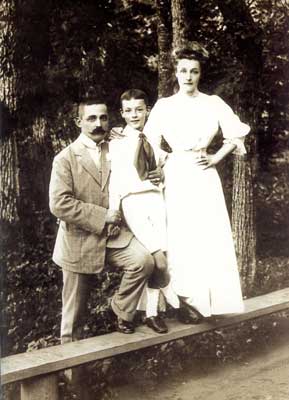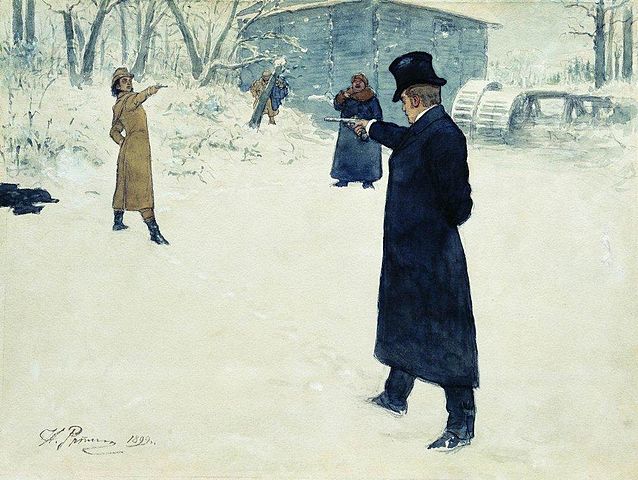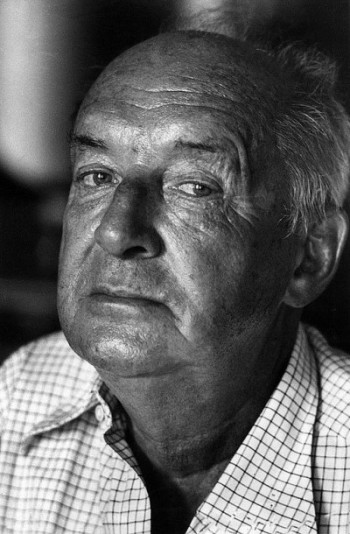Life is short. And Vladimir Nabokov’s translation of Evgeni Onegin is long.
Published in four volumes, the dense work includes a 1,000-page commentary, two appendices, a discussion of Russian prosody, an index and a facsimile reproduction of Pushkin’s 1837 novel.
Panned by critics and virtually unread since its publication, Nabokov’s translation offers a cautionary tale for translators—and content marketers.
In a recent She’s in Russia podcast interview, literary translator Isaac Wheeler shares fascinating insights on Nabokov, the pitfalls of literal translation and the “quantum” nature of words.
A fun listen for Russian lit lovers, Wheeler’s musings—on reader-first focus, UX and the nature of “undetonated” text—are also hugely useful to content marketers, copywriters and other professional word wielders.
Full disclosure: Wheeler, a poet and a translator of Russian and Ukrainian literature, is a family friend. She’s in Russia co-host Olivia Capozzalo is my daughter.
Vladimir Nabokov: Prodigy, Pornographer, Pedant?
One of the 20th century’s most gifted writers, Vladimir Nabokov was a complicated, chameleonic man.
A European elitist, he was obsessed with American pop culture and consumerism.
His 50+ works include both the memoir of idyllic 19th-century childhood and the fictionalized postwar travelogue of a pedophile.
Born into a loving, affectionate and aristocratic St. Petersburg family, Nabokov grew up speaking Russian, French and English with equal fluency.

He wrote acclaimed works in both Russian and English. With his mastery of both linguistics and prose, you’d imagine Nabokov’s translations would be sublime, right?
Da and nyet.
Nabokov’s Alice in Wonderland: a Joy to Read

As a young man, Nabokov translated Alice in Wonderland, playing freely with the story’s text and making liberal cultural adaptations to assure its relevance to Russian readers.
Louis Carroll’s original story, for example, includes a French mouse. Alice imagines he arrived in England “with William the Conqueror.”
The veddy English reference is lost on Russian readers. So Nabokov’s Alice deduces the French mouse arrived with Napoleon’s army and was left behind when the emperor marched his troops out of Russia.
Wheeler considers Nabokov’s Alice in Wonderland “arguably the best Russian translation of that text that anyone has ever produced. It’s just a joy to read.”
Two decades later, Nabokov attempted the translation of Pushkin’s Evgeni Onegin.
Nabokov’s Evgeni Onegin: A Diamond Compressed into Coal

Nabokov began the project in 1944. Within a year he realized he was in over his head. “I was…on the verge of a breakdown and not fit for company,” he wrote to Edmund Wilson, the writer, critic and a supporter of Nabokov’s early work.
In 1964—20 years later—Nabokov finally published his “monster.” It was his sixth version of the Evgeni Onegin text and notes.
Deemed a “disaster” by Wilson—now no longer a friend—Nabokov’s translation was slammed by critics.
The overwrought transcription, says Wheeler, transformed a “famously lucid, readable, accessible Pushkin into this impacted, impenetrable matrix of old English roots and odd grammatical constructions.”
“He’s taken a diamond and compressed it into coal somehow. He’s done something truly perverse.”
The two works, Wheeler observes, illustrate the difference between “free translation” and “literal translation.”
Wheeler favors free translation for a reason that will resonate with content marketers: free translation aims to serve the reader.
3 Content Marketing Takeaways from a Russian Lit Translator
I came away from Wheeler’s interview with three translational insights—and three related takeaways for content marketers:
#1 You Work for Your Reader.
In approaching a translation, Wheeler says, “I constantly remind myself that it’s the reader who I work for when I translate. Not the author. And not the publisher. And not myself. The person that I have to be most actively empathizing with is the reader.”
The best content marketers also work for their readers. An audience-first focus is what differentiates our discipline from outbound marketing and traditional advertising.
Content marketers live with the paradoxical truth that we sell product by not selling product.
Why? Because people hate being sold to. And they’ve developed exquisitely sensitive noses for sniffing out salespeak masquerading as content.
Do you make these mistakes in content marketing focus?
The most effective content homes in on customer needs, wants and pain points. You’ll know your work is off-target if instead it repeatedly focuses on:
- Your brand:Companies spend a lot of time and money creating “brand profiles,” “brand DNA” and “brand words.” But you can’t control brand perception by peppering copy with company-approved words. Enduring brands aren’t created by marketing teams or ad agencies. A brand is co-created by visionary leaders and customers. Over time. The process requires nurturance, maintenance and the understanding that brand language evolves.
- Your product: Businesses care deeply about their products, but your customer doesn’t share your passion. She has a long list of things that are more important to her. Herself. Her family. Her friends. Her dog. Her hopes, dreams, aspirations and goals. Her problems, worries, pain points and obstacles. Your product gets on her radar—and will be bought, used, shared, and evangelized—to the extent that it speaks to what matters to her.
- Your company: Sure, customers want to see the human side of business. People like to know companies are made up of real people. But a steady stream of company backstories—about your cool start-up culture, open-plan work space, Aspen snowboarding retreats and local-brew Happy Hours—gets old fast.
Consistent branding, delineation of products’ Value Propositions, and human-faced business are important. You strengthen them with customer-focused content that shows rather than tells customers about these attributes.
#2 Words are Undetonated Bombs.
Wheeler sees “text as sort of undetonated, unactivated or unused until the reader’s consciousness gets involved.” Literature’s power is unlocked when the words are activated, assigned meaning, interpreted, decoded, “detonated” by the reader.
Marketing content works the same way.
Customers detonate your content.
Marketers talk a lot about “driving” things. “Driving action.” “Driving traffic.” “Driving pageviews.” “Driving customers through the sales funnel.”
But unread content drives nothing.
It can’t drive, convert or be used at all until it’s activated by readers, viewers, listeners. Content gets “detonated” when the customer contextualizes your content, makes it their own and takes action.
Tips for detonatable content
How can you hook customers’ attention, pull them deeper into content and move them to “detonation”?
- Create content relevant to readers. In her book, The Transformational Consumer, Tara-Nicholle Nelson discusses the need to shift from “product-first” thinking to “problem-first thinking.” Relevant, engaging content speaks to and resolves customer pain points and “stuckness,” helping customers move forward.
- Speak like a person. People perk up when content speaks conversationally. Problem-solving content works best in a voice that mixes informed authority and chatty friendliness—and it helps if you aim to speak to one person, rather than an “audience” or demographic swath.
- Read your work out loud. The easiest way to spot corporate-speak and pompous, phony construction? Read what you write out loud. You’ll immediately know which words to cut, simplify or swap. How to punctuate. Where to change up sentence length and structure.
#3 Good Content Bakes in User Experience.
Good translators don’t just translate words. They transmit sense memory, emotion, wordplay—the encounter experienced by readers of the original text.
“A translator guides a reader through an experience or provides a context in which the reader can autonomously explore an experience,” says Wheeler.
He likens this process to User Experience (UX), a term borrowed from the design world. Good UX simply, elegantly and exactly meets the needs of users.
UX adds astonishing power to your content.
Content marketers benefit enormously from baking in UX when crafting content.
UX starts with a laser focus on the user, your customer. Unlike a literature reader, your customer doesn’t come to your site to savor the power of your prose.
She’s there to get something done. To accomplish a task. To move forward rather than meander. Google tells us searchers’ goals fall into four “micro-moments”:
-
- I want to know
-
- I want to go
-
- I want to do
-
- I want to buy
Make it easy for her to do all four.
Help your customer get things done.
To bake UX into your content:
- Identify your reader’s problem or pain point. How does your content speak to and resolve her pain?
- Know what you want to say. When I find myself fiddling endlessly with a paragraph or sentence, it often means I don’t know what I’m talking about. The great writing teacher William Zinsser says “Writers must constantly ask: What am I trying to say? Then they must look at what they have written and ask: Have I said it?” When you answer, “yes,” you’re ready to launch your words.
- Don’t bury the lede. In journalism, the first sentence or two of the story is called the “lede” or “lead.” Make sure you include the most important and usable information at the top of your post or webpage. Could be a succinct synopsis–what journalists call a “nut graph.” Or it might be a hook that grabs attention–followed quickly by the content’s Unique Value Proposition: that certain something that promises readers a reward if they stick around and read.
- Use subheds, bullets and lists to let readers scan quickly and decide whether or not to “invest” their precious time to take the next step: to read, bookmark, favorite.
- Start heds and subheds with power-packed words, benefit-focused and informational phrases.
- Bold the most important words.
- Use descriptive or informational words in links
- .
Discover More Content Marketing Gems: Listen to the Full Podcast
Want more translational insights that will strengthen your content marketing? Listen to Wheeler’s entire interview on the She’s in Russia podcast. His chat starts at 28:35.
You can learn more about Wheeler’s work by listening to his Black Box Poetry podcast. Please share your thoughts in comments!
———————————————————————————————————————
Photos courtesy of Wikimedia: Vladimir Nabokov, Alice in Wonderland by John Tenniel, Nabokov family, Yevgeny Onegin by Repin


Thanks for sharing the information. I like to suggest a famous brand strategist consultant named Enda Mac Nally well known for his dramatic writing because that delivers the best results. Enda Mac Nally helps customer creates strategic work custom-made to their particular issues.
nice article, you are great!
Hi, Good day. This is a perfect guide for any beginner to the world of content marketing. It can often be super confusing when you are new to content marketing and you may not be aware of how to go about things. This article is great as it talks about the various factors that can make content marketing. I agree with every single point that has been mentioned above.
626r6i